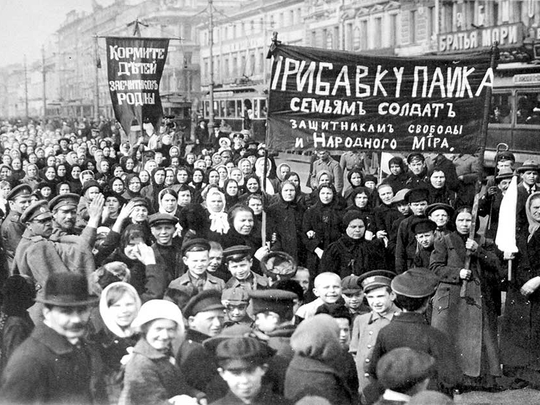
MADRID: The events that took place one hundred years ago in Russia this week culminated in the ascent of Vladimir Lenin to power, laying the foundations for the establishment of the Soviet Union four years later, and setting the vast nation on a course of development and progress that still resonates today on the world stage.
Lenin’s Bolsheviks overthrew a weak Provisional Government, one that came to power seven months earlier when hungry and striking workers shut down the capital of St. Petersburg early in March.
Tsar Nicholas II, whose Romanov dynasty had ruled Moscovy and united the Russias in 1613, ordered his troops to quell the riots on strikers on March 8.
ALSO READ:
How the October Revolution unfolded
Russia confronts past in teaching of 1917 revolution
Expatriates in UAE look back on Russian Revolution
Demoralised from a string of defeats on the Eastern Front, fed up of food shortages themselves, and sympathetic to the strikers’ cause, the troops refused the orders and mutinied.
Nicholas resigned a week later, allowing the Duma — Russia’s weak but elected parliament — to assume powers through the Provisional Government.
Social unrest
Against a backdrop of social unrest, economic deprivation and the agitation of Lenin’s extremist Bolshevik workers’ committee, the Provisional Government was unable to stem the chaos, paving the way for October Revolution.
Lenin’s Communists immediately ended Russia’s participation in the First World War.
It had entered the war on the side of the Triple Entente along with Great Britain and France.
Theoretically, Russia had Europe’s largest army, with 5 million men.
Realistically, it only had 4.6 million rifles, the men were poorly trained, poorly led, unused to the brutality of fighting a modern war, and were wholly inadequate.
By the time of the decree of peace issued by the Bolsheviks the day after they came to power, some 2.5 million men had been killed, another 4.5 million were in captivity, and the nation was broke, with its gold reserves depleted and 8 trillion roubles in debt.
While the Bolsheviks did end Russia’s role on the eastern front, it sparked a civil war between its own Red Army, and those forces that supported the Tsar, the Romanovs and who opposed the common property ownership and egalitarian philosophy of Communist.
USSR: 1922
This ‘White Army’ fought on for four more years, before its defeat and widespread executions and imprisonment in Siberia of its members, led to the establishment of the Union of Soviet Socialist Republics (USSR) in 1922.
It’s difficult to quantify just how important the establishment of the USSR initially was, but Lenin’s death in 1924 did accelerate a seminal process of extremism, radicalisation and a slide into totalitarianism under the leadership of Joseph Stalin.
The subsequent land clearances, political executions, widespread imprisonment and forced agrarian reforms and mass industrialisation did both directly lead to the deaths of millions of Russians.
Historians still argue the actual number, with estimates ranging from 7 million on the low end, to the 60 million suggested by novelist Alexander Solzhenitsyn.
The generally accepted figure is 20 million up to his death in 1952. That figure excludes the 20 million who died during Russia’s involvement in the Second World War — or the Great Patriotic War as it is known there.
In present day Ukraine, a former Soviet Republic struggling with violent separatist forces that have split the eastern portion of the nation, the October Revolution won’t be marked, particularly that most Ukrainians would support the view that the USSR under Stalin brought about a famine that killed 10 million of its people.
Similarly, its Cossacks, who lived in Crimea and fought with the White Russians, believe that the annexation of their territory in March 2014 on orders of Russian President Vladimir Putin, had its roots in the aftermath of the October Revolution.
Dilemma for Putin
In Moscow itself, the anniversary presents a dilemma for Putin.
As the New York Times recently noted, Putin loathes the very idea of revolution, not to mention the thought of Russians dancing in the streets at the overthrow of any ruler.
Moreover, 1917 smudges the Kremlin’s version of Russian history as a long, unified march to greatness, meant to instil a sense of national pride and purpose. For the record, the Kremlin is sticking to the official line of avoiding domestic discord.
“For one group of people, the revolution was the death knell of Great Russia — it was ‘Brexit,’ when we stopped our development in Europe,” Mikhail Shvydkoy, Putin’s special representative on cultural matters told The New York Times. “For many other people, the Soviet past was the best time of their lives.”












